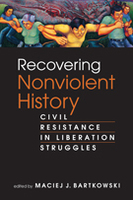Tag Archives: movements
Using Class and Race Awareness to strengthen Social Action
Please be aware of this important upcoming workshop on “Using Class and Race Awareness to strengthen Social Action,” to be led at Pendle Hill by faculty and friends of our Peace and Conflict Studies program!
Invitation to Pendle Hill Workshop on Action Groups Moving Forward
George Lakey, Ingrid Lakey, and Sarah Willie-LeBreton will be leading a workshop at Pendle Hill entitled “Using Class and Race Awareness to strengthen Social Action,” beginning the evening of April 11 and concluding at noon on April 13, 2014.
We hope folks from Haverford, Bryn Mawr and Swarthmore Colleges will participate in this workshop. Commuters pay $230 for the workshop which includes meals. (Students at Swarthmore College can apply for up to $50 to support workshop attendance, through a form on the LC website.)
Here is a link to the workshop description. http://pendlehill.org/workshops/spring-2014/939-using-class-and-race-awareness-to-strengthen-social-action
Commitment to the entire workshop is required.
How to Start a Revolution
There are two local opportunities this week to screen and discuss the documentary “How to Start a Revolution” about Gene Sharp’s long career and groundbreaking work in developing the theory of nonviolent strategic action.
Pendle Hill will show the film on July 1, 7:30-9:00 p.m. as part of its First Mondays series. Professor Lee Smithey will lead a discussion about the film. Download a flyer.
Envision Peace Museum will show the film on July 3, 6:30-9:00 p.m. with a panel discussion afterwards including Professor Lee Smithey, Arzu Geybulla in Turkey, and Stephanie Ambar in Brazil. Download a flyer. Download a flyer.
Swarthmore College is privileged to be the home of the papers of the Albert Einstein Institution.
Identity Formation in Nonviolent Struggle

Professor Smithey has contributed a chapter on “Identity Formation in Nonviolent Struggle” to a new book edited by Maciej Bartkowski, Recovering Nonviolent History: Civil Resistance in Liberation Struggles. (Lynne Rienner Publishers)
Smithey’s chapter serves as a theoretical primer on the social movement literature on collective identities and the under-explored connections with strategic action. Other chapters cover a range of global, and often forgotten, cases of nonviolent liberation struggles where national identities have played important roles.
As other chapters in this volume illustrate, nonviolent resistance has often played an important role in nationalist movements for independence. These cases offer important opportunities to study the power potentials of strategic nonviolent action, and the prominence of nationalism in them compels us to ask how identity and tactical choice influence one another. This chapter draws on the sociological study of social movements to theorize ways of thinking about relationships between the nonviolent tactics that many nationalist movements have employed in conflict and their collective national identities. The relationships are probably much closer and more important than either sociologists or scholars of nonviolent resistance have realized. Identities can be publicly displayed for strategic ends. Tactical repertoires, including nonviolent ones, reflect collective identities or resisters’ cultural predispositions. Conversely, choosing certain tactics can influence the construction of collective identities as people adapt their national identity to incorporate new tactical rationales and justifications.
Here is the book description:
This unique book brings to light the little-known, but powerful roles that civil resistance has played in national liberation struggles throughout history. Ranging from the American Revolution to Kosovo in the 1990s, from Egypt under colonial rule to present-day West Papua and Palestine, the authors of Recovering Nonviolent History consider several key questions: What kinds of civilian-based nonviolent strategy and tactics have been used in liberation struggles? What accounts for their successes and failures? Not least, how did nonviolent resistance influence national identities and socioeconomic and political institutions both prior to and after liberation, and why has this history been so often ignored? The story that emerges is a compelling one of the agency of thousands and even millions of ordinary people as they used nonviolent force in the course of struggles against foreign subjugation.
For those interested in exploring the intersection of nationalism and nonviolence further, you might be interested in exploring Manfred Steger’s book, Gandhi’s Dilemma: Nonviolent Principles and Nationalist Power in which Steger examines the tension between Gandhi’s deployment of Indian nationalism and his universal philosophy of nonviolence.
